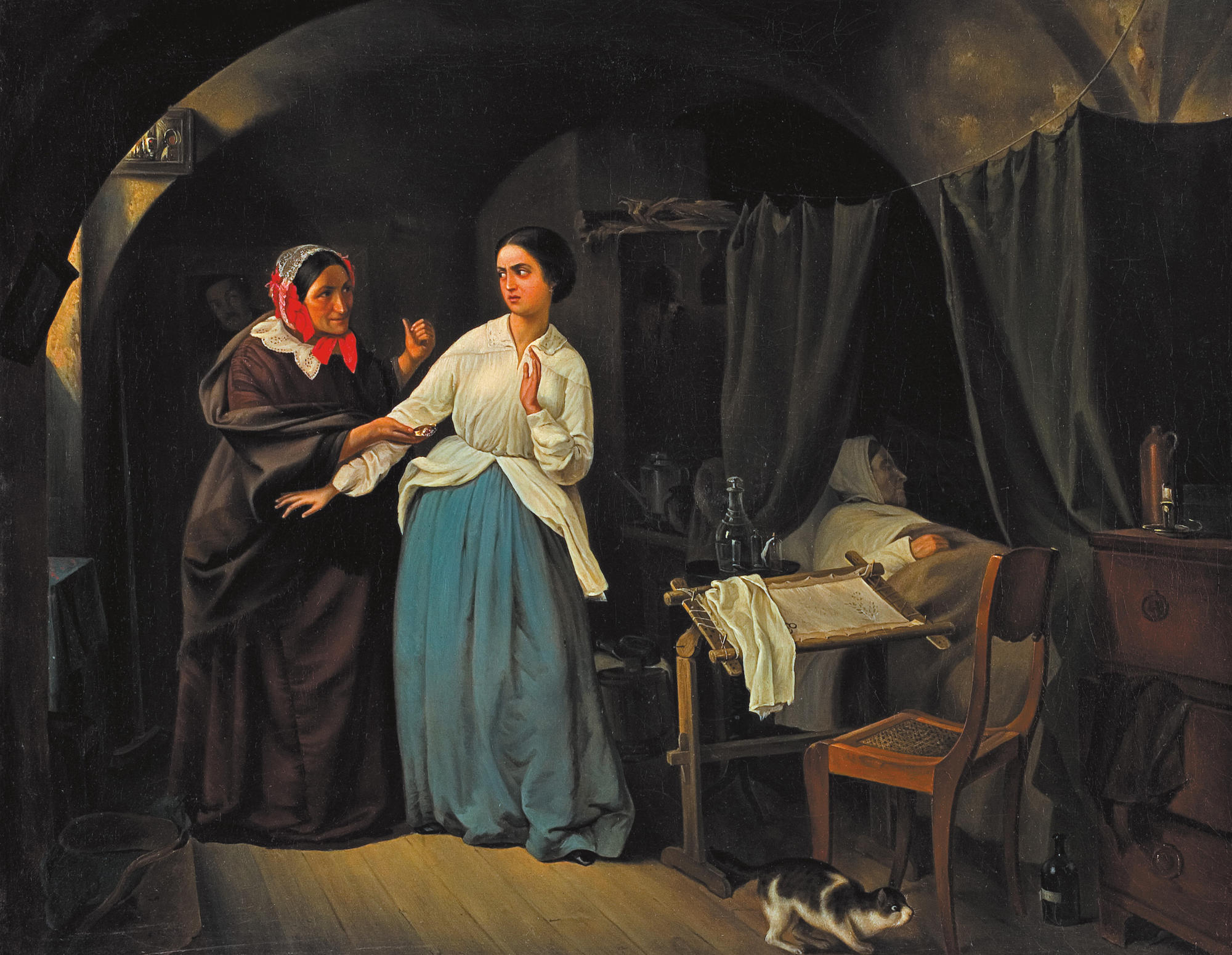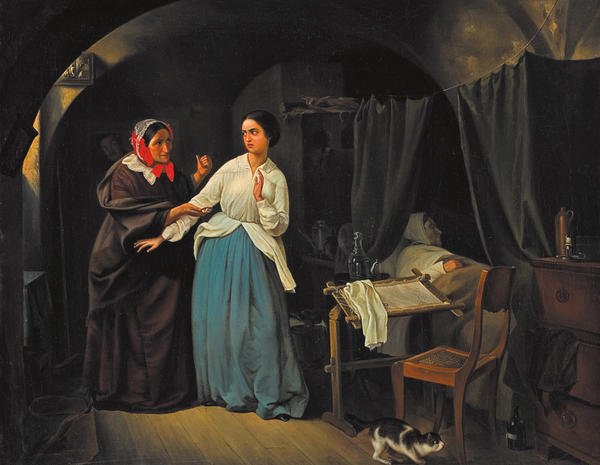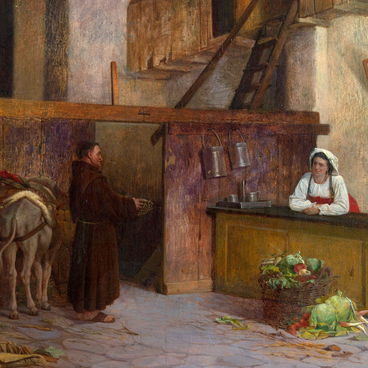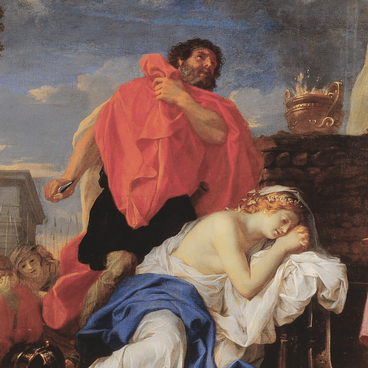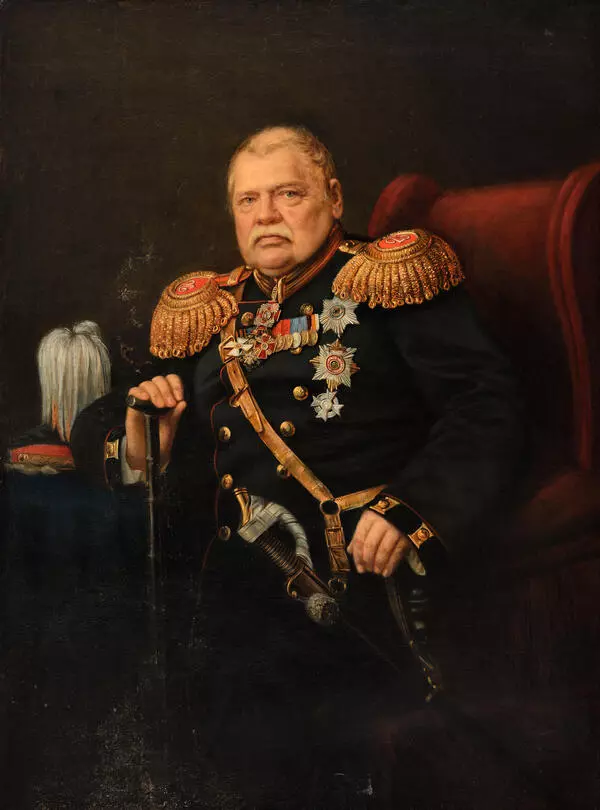Nikolay Shilder is a Russian battle, genre and portrait painter. As a young man, he tried to enter the painting school of the Society for the Encouragement of Artists twice but was unsuccessful both times.
In 1850 he enrolled in the Emperor’s Academy of Arts where he studied at the battle painting class. His professor was Gottfried Willewalde. However, later he preferred working in the domestic style, which at that time was called “the painting of people”s lives” or “de genre”.
In 1861 Shilder was bestowed the Academician title. In his later artistic life he primarily focused on painting portraits and icons.
This painting was created by Nikolay Shilder during his education at the Academy of Arts for the awarding of the big silver medal. Most probably, the author decided to develop the theme of the sepia drawing Mousetrap by the forefather of Russian critical genre painting Pavel Fedotov made in 1846. In our days this painting is exhibited in the State Tretyakov Gallery.
Shilder had an academic approach to life with all of its unsightly problems. He looked at them in the light of experience of recognized art masters. Light-and-dark direction, smooth picturesque manner and symbolic details make this painting similar to classic Holland domestic paintings of the 17th century.
This work is an author’s repetition of the same name painting bought by the Moscow collector Pavel Tretyakov in the 1850s at an early stage of his collection. Its subject matter is a variation of a traditional art situation when innocence comes across temptation.
However, even though Temptation from the Serpukhov Museum of History and Art is similar to the original in size and key details it can be considered a self-consistent version. On the initial painting Shilder paid special attention to painting figures and revealing character and here he tried to focus on the surroundings and small details.
According to art experts the carafe of clean drinking water symbolizes fragile innocence of the young lady. The stub of a candle at the bed of a sick woman, probably the young lady’s mother, hints that soon death is coming. The behavior of a cat hunting a mouse under the cupboard is similar to the behavior of a matchmaker. The low ceiling indicates that the action takes place in a basement. Whereas the sunlight falling into the rooms through the basement window symbolizes the presence of God. The painter also placed an icon on that window’s jamb.
In 1850 he enrolled in the Emperor’s Academy of Arts where he studied at the battle painting class. His professor was Gottfried Willewalde. However, later he preferred working in the domestic style, which at that time was called “the painting of people”s lives” or “de genre”.
In 1861 Shilder was bestowed the Academician title. In his later artistic life he primarily focused on painting portraits and icons.
This painting was created by Nikolay Shilder during his education at the Academy of Arts for the awarding of the big silver medal. Most probably, the author decided to develop the theme of the sepia drawing Mousetrap by the forefather of Russian critical genre painting Pavel Fedotov made in 1846. In our days this painting is exhibited in the State Tretyakov Gallery.
Shilder had an academic approach to life with all of its unsightly problems. He looked at them in the light of experience of recognized art masters. Light-and-dark direction, smooth picturesque manner and symbolic details make this painting similar to classic Holland domestic paintings of the 17th century.
This work is an author’s repetition of the same name painting bought by the Moscow collector Pavel Tretyakov in the 1850s at an early stage of his collection. Its subject matter is a variation of a traditional art situation when innocence comes across temptation.
However, even though Temptation from the Serpukhov Museum of History and Art is similar to the original in size and key details it can be considered a self-consistent version. On the initial painting Shilder paid special attention to painting figures and revealing character and here he tried to focus on the surroundings and small details.
According to art experts the carafe of clean drinking water symbolizes fragile innocence of the young lady. The stub of a candle at the bed of a sick woman, probably the young lady’s mother, hints that soon death is coming. The behavior of a cat hunting a mouse under the cupboard is similar to the behavior of a matchmaker. The low ceiling indicates that the action takes place in a basement. Whereas the sunlight falling into the rooms through the basement window symbolizes the presence of God. The painter also placed an icon on that window’s jamb.
